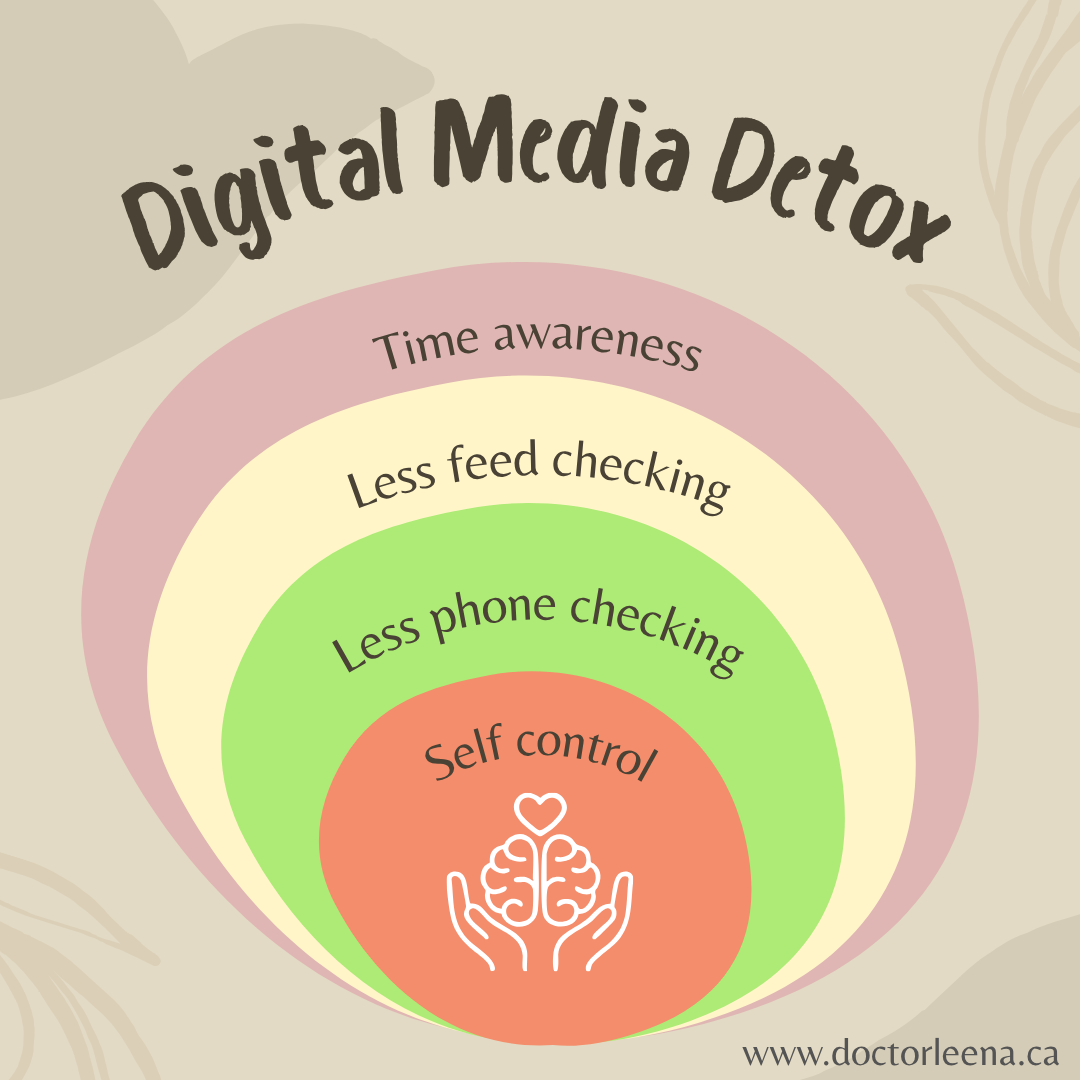
Dr. Leena Sripada’s Blog
Sweet Cravings: Why We Crave Sweet — and What To Do About It
Dr. Leena Sripada, ND, AAWC
For many people, sweet cravings intensify during the holiday season. Shorter days, colder weather, festive gatherings, emotional triggers, and an abundance of treats around can make it feel nearly impossible to say no to sugar — even when you tell yourself you are going to be careful this year. We all know its not good for us, and sometimes we don’t even feel good eating sweet….so why are we stuck in the craving loop?
From an Ayurvedic perspective, sweet cravings aren’t a failure of willpower. They’re a signal from the body asking for nourishment, grounding, comfort, or energy. Understanding why these cravings arise is the first step toward working with them in a supportive and sustainable way instead of against them.
The Sweet Taste in Ayurveda: One of the Six Tastes
Ayurveda recognizes six tastes that make up a balanced diet:
Sweet
Sour
Salty
Bitter
Pungent (spicy)
Astringent
The sweet taste is the first and most foundational of the six. In balance, it is nourishing, grounding, strengthening, and soothing. Sweet taste builds tissues, supports immunity (ojas), calms the nervous system, and promotes feelings of safety and satisfaction.
Naturally sweet foods include:
Whole grains
Root vegetables
Milk
Fruits
Honey, maple syrup, dates etc.
When sweet taste is consumed in its whole-food form, it is deeply supportive. Problems arise when sweet taste is overconsumed — especially as refined sugar — or used to compensate for deeper imbalances.
—> Before we move on….can you take a moment to look at how much on your daily plate is “sweet in taste”? This includes carbs, dairy, sweet veggies like carrots, peas, beets and the obvious sweets like cookies, cakes, chocolates, juice.
Why We Crave Sweet Foods
1. Blood Sugar Imbalances
One of the most common reasons for sweet cravings is unstable blood sugar. Skipping meals, under-eating protein, or relying heavily on refined carbohydrates can lead to blood sugar crashes. When glucose drops, the body urgently seeks quick energy, and sugar becomes the fastest solution.
This cycle can be especially pronounced during busy holiday schedules when meals are irregular. This is common in individuals who are pre-diabetic (and may not know it) but also when you have a vata constitution where stress triggers blood sugar to go up and down. If you are concerned about this, speak with your naturopathic doctor to have additional testing done including Ha1c, fasting blood glucose and fasting insulin (a test most GPs are not doing but should be checking).
2. Stress and Nervous System
It’s important to understand that wweet taste is calming to Vata and Pitta doshas. During times of stress, overwhelm, or burnout, the nervous system craves grounding and comfort — and sweet foods temporarily provide that sense of relief. This is why cravings often intensify when you’re tired, emotionally drained, or juggling too many responsibilities. Sweet taste also “cools” down Pitta dosha. Think of when you eat something too spicy, you want something sweet to cool down your tongue.
3. Candida and Gut Imbalances
An overgrowth of yeast such as candida can drive intense sugar cravings. Yeast feeds on sugar, creating a self-perpetuating cycle of craving and consumption. This is often accompanied by digestive symptoms, fatigue, brain fog, or recurrent infections. This may manifest as yeast infections — but not always. Candida can grow anywhere in the body especially in the digestive tract leading to significant gas & bloating. You naturopathic doctor can help you identify if you have a candida issue and treat it accordingly.
4. The Body Seeking Instant Energy
At a basic physiological level, sugar is a fast fuel source. When digestion (agni) is weak, stress hormones are elevated, or nutrient intake is inadequate, the body looks for the quickest energy available — refined sugar fits that role perfectly. When you are rushed and on the go, it is a quick source of fuel to get you by — but you will inevitably crash aftewards.
Why Refined Sugar Makes Cravings Worse
Refined sugar is stripped of fiber, minerals, and life force (prana). It causes rapid blood sugar spikes followed by crashes, increases inflammation, feeds harmful gut microbes, and strains the adrenal glands.
Over time, excess refined sugar can:
Worsen insulin resistance
Disrupt gut health
Increase anxiety and mood swings
Deplete minerals needed for energy and hormone balance
And it is no doubt “addictive”
Better Sweeteners from an Ayurvedic Perspective
Ayurveda doesn’t say you can’t enjoy sweet — it encourages better forms of sweet taste and understands which body types need what.
Healthier sweeteners include:
Raw honey (never cooked)
Pure maple syrup
Jaggery
Coconut sugar
These sweeteners still require moderation, but they provide nourishment rather than depletion when used mindfully. Then there is monk fruit extract and stevia which are used to mimic sweet taste naturally without spiking your blood sugar.
The Emotional Side of Sweet Cravings
On a deeper level, sweet taste is emotionally comforting, reassuring, and nurturing. It’s often our first association with love — breast milk, warm meals, family traditions, and celebrations.
During the holidays, sweet cravings may arise not just from physical hunger, but from:
Loneliness or grief
Emotional overwhelm
Feeling ungrounded or unsupported
A need for rest, pleasure, or reassurance
Recognizing the emotional layer of cravings allows us to respond with compassion rather than restriction. Pay attention to how you are feeling. Simply making space to feel what you are feeling and listen to what is going on is the first step to addressing cravings.
Simple Tips to Curb Holiday Sweet Cravings
If sugar is something you struggle with, take a look at the suggestions below. Can you commit to 1-2 changes this week?
Eat regular, grounding meals with protein, healthy fats, and warm cooked foods
Include naturally sweet foods like roasted root vegetables, oats, and stewed fruit
Balance your plate — ensure all six tastes are present
Pause before reaching for sweets and ask: “What do I actually need right now?”
Support your nervous system with warm teas, meditation, and adequate sleep
Choose better sweeteners and savour them slowly, without guilt
A Gentle Reminder
Sweet cravings are not something to “fight.” They are information. When we listen closely, they guide us back to nourishment, balance, and care — especially during the emotionally rich and demanding holiday season. Working with cravings rather than against them is the most sustainable path to lasting health.
And if this is something you have tried but find it hard to do on your own — its ok, this is a very common challenge. You can work with your practitioner
***
In my practice, I have seen people struggle for years but I have also seen many people come out of cravings within weeks with the right customized approach with Ayurvedic understanding, balanced diet, cleansing herbs and the right mindset — to the point where they feel like their taste buds have changed and they no longer crave sweets. Then they feel truly free.
If this is something you would like to work on, speak with Dr. Leena Sripada, ND.
Digital Fasting: Resetting Your Brain in an Always-On World
The benefits of unplugging or detoxing from digital devices to recharge our own battery and health.
We’ve all heard of intermittent fasting — taking scheduled breaks from food to detox the body, reset digestion, and improve blood sugar balance. But there’s another kind of fasting that’s just as vital for our well-being: digital fasting.
Do you remember what it was like around 15-20 years ago when there were no smartphones?
Digital fasting means consciously taking breaks from technology — your phone, laptop, TV, social media, and even notifications. It’s a reset for your brain and nervous system in a world that never stops pinging, buzzing, or demanding your attention.
The Hidden Drain on Our Energy
Last week, I offered a webinar on women’s health and burnout and we were talking about all the factors that lead us to feeling depleted. Later that week while I was reflecting on our discussion, there was once obvious ‘drain’ that I had overseen: the digital drain. We often talk about overwork, lack of sleep, emotional fatigue and lack of vitamins — but few of us recognize how constant digital exposure depletes our internal battery.
And its happening more and more and to YOUNGER PEOPLE as well - including teens & children.
Every beep, vibration, and pop-up nudges our nervous system into “on” mode. Even when we’re not consciously reacting, our bodies are subtly preparing to respond — a continuous low-level stress that keeps adrenaline trickling and prevents full rest. Over time, this leaves us frazzled, distracted, and strangely tired even after a “quiet” day online.
The Dopamine Loop
Have you heard about dopamine? Each scroll, click, or notification gives us a tiny hit of dopamine — the same neurotransmitter linked to motivation and reward. This creates a powerful feedback loop: we keep checking, refreshing, and consuming to feel that next micro-burst of pleasure. There is an empty sense of accomplishment.
But the problem? Our brains were never designed for such constant stimulation. Over time, we build tolerance, meaning we need more digital input to feel satisfied — just like any other form of addiction. That’s why many people feel anxious when they try to “unplug.”
Why Digital Fasting Works
Just like intermittent fasting allows the body to rest and repair, digital fasting gives the mind space to recalibrate. When you consciously unplug:
You stop energy leaks. Constant notifications drain your attention — and attention is energy. Reducing digital noise allows you to reclaim mental clarity.
Your nervous system resets. The absence of digital triggers lets your body downshift from “fight or flight” into “rest and digest.”
You reconnect with the present. Without the pull of screens, conversations become deeper, food tastes better, and you notice small joys that often go unseen.
Creativity and focus return. When your mind isn’t overstimulated, it naturally finds flow again.
How to Practice Digital Fasting
There’s no one right way to do it — start small and build gradually. Here are some ideas:
The 16-Hour Digital Fast – Similar to intermittent fasting, pick a 16-hour window (for example, 8 p.m. to noon) where you completely unplug. Use mornings for reflection, journaling, or movement before logging on.
No Phone First Thing – Delay checking your phone for the first hour after waking. Protect your mental space before the world’s noise enters.
No Social Media Before Noon – Give your brain time to focus on creative or meaningful work before the dopamine hits of scrolling.
24-Hour Digital Break – One day a week, disconnect entirely. Read, walk, cook, or spend time with loved ones — screen-free.
Tech-Free Zones – Keep phones out of bedrooms and dining areas. Create sacred spaces for rest and connection.
Tools That Can Help
Ironically, a few smart apps can support your digital fast:
Freedom – block distracting sites and apps for set periods.
Forest – gamifies focus by growing a virtual tree each time you stay off your phone.
Digital Wellbeing (Android) or Screen Time (iPhone) – track usage and set limits.
In the end, digital fasting isn’t about rejecting technology - it’s about reclaiming balance and using it wisely instead of being ‘run by it’.
By stepping back from the constant noise, we conserve energy, restore focus, and return to what truly matters: being fully present, grounded, and alive in our own lives. If you struggle with anxiety, lack of focus, exhaustion or burnout - consider a digital fast as part of your routine. Don’t just think about it, make a plan.
Need some support with this? Let’s talk about a strategy to support your nervous system.
Reset Your Rhythm: Daylight Saving Cortisol Balance & Ayurveda
Understanding cortisol and daylight savings with Ayurveda.
Dr. Leena Sripada, ND, AAWC
As daylight saving time arrived this past weekend, it prompted me to reflect on our circadian rhythms and what it takes to maintain a smooth transition with a 1- hour difference. Many of us feel subtly “off.” Our mornings may more relaxed….or groggier with sleeping in and our evenings more restless or tired with the earlier sunset and it can take days—or even weeks—to feel in sync again. While this may seem like a small modern inconvenience, Ayurveda recognized the importance of these internal and external rhythms thousands of years ago.
This seasonal clock change is an invitation to pause and realign our body’s natural rhythms—especially the delicate dance between cortisol, our primary stress hormone, and the body’s circadian clock.
The Science of Cortisol and the Circadian Rhythm
Cortisol is an essential hormone - its not just a stress hormone, but a hormone which helps us feel alert, awake and energized. It follows a precise daily rhythm: it peaks in the early morning, helping us wake up with energy, and gradually decline through the day, reaching its lowest levels at night to allow rest and repair.
But when our light exposure, meal timing, or sleep schedule shift—even by an hour—this rhythm can become disrupted.
You might notice:
Difficulty falling asleep or waking up,
Midday drops of energy or “wired but tired” energy at night,
Increased cravings or stress sensitivity.
Cortisol is deeply tied to our body’s internal clock, influencing metabolism, mood, digestion, and immune balance. A sudden time shift can feel like mild jet lag to our adrenal and nervous systems.
Ayurveda’s Wisdom on Daily Rhythms
Long before modern chronobiology, Ayurveda described the importance of aligning with the cycles of nature—what we now call circadian rhythms. Through dinacharya, or daily routine, Ayurveda teaches that the body, mind, and spirit thrive when we rise, eat, work, and rest in harmony with the movements of the sun.
Each time of day is governed by a different dosha:
Kapha (6–10 a.m./p.m.) – grounded, steady energy; ideal for gentle movement and consistency.
Pitta (10 a.m.–2 p.m./p.m.) – sharp, focused energy; best for digestion and productivity.
Vata (2–6 a.m./p.m.) – light, creative energy; ideal for meditation or reflective evening wind-downs.
When we follow these natural doshic cycles, cortisol naturally aligns with its intended rhythm. When we resist them—staying up late, skipping meals, or working through the night—our hormones, digestion, and sleep fall out of sync.
What the Time Change Teaches Us
The shift in daylight is more than a logistical adjustment, it’s a reminder to come back to rhythmic living. Our bodies rely on consistency: light cues, mealtimes, and rest cycles are all anchors for hormonal balance.
Ayurveda views this transition as a Vata-aggravating moment, when instability and overstimulation increase. To ground this energy, we can emphasize warmth, nourishment, and steady self-care rituals that restore calm and structure.
Even simple acts like stepping outside into morning sunlight, maintaining regular mealtimes, and winding down with warm oil massage or herbal tea in the evening can help reorient the body.
Ayurvedic Tips to Reset After the Time Change
1. Morning sun.
Within an hour of waking, expose yourself to natural light, ideally outdoors. This signals your brain to raise cortisol naturally and reset your circadian clock. It is the simplest thing to help us reset, yet how many of us do it, in modern day?
2. Keep consistent wake and sleep times.
Try to wake and sleep at the same time daily—even on weekends. Regularity is medicine for Vata imbalance.
3. Eat your main meal at midday.
Follow the sun’s peak energy (Pitta time) for your largest, most nourishing meal. This reinforces healthy digestion and energy flow.
4. Ground your evenings.
Dim lights after sunset, avoid overstimulation, and include calming rituals such as abhyanga (warm oil self-massage), gentle yoga, or sipping spiced herbal milk or tea.
5. Support your adrenals with adaptogens.
Herbs like ashwagandha, shatavari, rhodiola and licorice help buffer stress and promote a balanced cortisol rhythm. Speak with your Ayurvedic practitioner.
A Moment to Realign
This subtle one-hour shift in time can serve as a powerful reminder: our bodies are always in dialogue with nature. When we honor the rising and setting of the sun, eat and rest with consistency, and live in rhythm with the earth’s cycles, we restore balance not just to our hormones—but to our sense of ease, clarity, and vitality.
As the clocks change, let this be your gentle nudge to reset your rhythm—to bring awareness, anchor your routines, and let your internal clock find harmony once again.
Want to learn more?
🌿 Join me for an upcoming webinar on “Avoid Burnout with Ayurveda”
We’ll explore how to naturally support your cortisol, daily rhythms and strengthen your energy, to prevent burnout with Ayurvedic and naturopathic tools.
Feeling Burnt Out?
Understanding ‘adrenal fatigue’ and the Ayurvedic approach to healing burnout.
Understanding the 4 Stages of Adrenal Fatigue — and How Ayurveda Can Help
Do you ever hit that afternoon crash, reaching for coffee or sugar just to make it through the day?
Do you wake up tired even after a full night’s sleep, or feel wired but tired late at night?
You’re not alone — and it’s not “just stress.” It could be adrenal insufficiency, also known as adrenal burnout or adrenal fatigue is your body’s way of saying enough is enough. It’s time to find the leaks and start rebuilding.
What Is Adrenal Insufficiency (or Adrenal Fatigue)?
Your adrenal glands are two small but mighty glands that sit on top of your kidneys. They produce hormones like cortisol, adrenaline, and DHEA, which regulate energy, metabolism, stress response, and immune balance.
When life’s stressors pile up — emotional strain, overwork, poor sleep, or chronic inflammation — your adrenals are forced to stay “switched on” for too long. This constant cortisol output keeps you in survival mode and gradually leads to depletion, leaving you fatigued, foggy, and less resilient.
While “adrenal fatigue” isn’t a formal medical diagnosis, in naturopathic and Ayurvedic medicine it represents a functional imbalance — the stage between optimal health and burnout. Ayurveda describes this as a loss of ojas, your deep life essence that governs immunity, vitality, and emotional stability.
The 4 Stages of Adrenal Fatigue
Stage 1: The Alarm Phase – Wired for Survival
Your body responds to stress with a rush of cortisol and adrenaline. You feel alert, driven, and capable — maybe even unstoppable. Sleep might feel optional, and your to-do list never ends.
But inside, your nervous system is stuck in fight-or-flight mode.
Ayurvedically: This is a Pitta imbalance — fire in overdrive.
Signs: Racing thoughts, anxiety, irritability, insomnia, and digestive upset.
Stage 2: The Resistance Phase – Running on Reserve
The stress continues. Cortisol remains moderately high to keep you going. You’re functioning — but fatigue starts creeping in. You rely on caffeine or sugar for energy and may notice afternoon crashes, bloating, or PMS symptoms.
Ayurvedically: Both Pitta and Vata are now disturbed — the fire flickers, and the wind fans it unpredictably.
Signs: Brain fog, irregular sleep, caffeine dependence, mild weight gain, and restlessness.
Stage 3: The Exhaustion Phase – When the Tank Is Empty
Now cortisol production begins to decline. You wake up tired, feel tired all day, and crave salty or sweet foods. Small stressors feel overwhelming. Your immunity dips, and you may experience depression or hormonal irregularities.
Ayurvedically: Vata predominates — the system is dry, depleted, and unstable. Ojas (vital energy) is low.
Signs: Fatigue, dizziness, low mood, low libido, and frequent illness.
Stage 4: Burnout – Adrenal Insufficiency
Your adrenals can no longer meet the body’s demands. You feel detached, flat, and unable to recover from even minor exertion. Thyroid imbalances, chronic fatigue, and blood sugar instability often appear.
Ayurvedically: Profound ojas depletion and dhatu (tissue) weakness.
Signs: Emotional numbness, exhaustion, poor stress tolerance, and deep physical fatigue.
Why It Happens
In today’s world, we often live in constant output mode — caring, managing, achieving, and rarely pausing. Emotional suppression, multitasking, nutrient-poor diets, and lack of true rest create a chronic stress loop.
From an Ayurvedic perspective, burnout is the result of Vata aggravation (nervous system overactivity) and ojas depletion (loss of essence and resilience). It’s your body’s way of saying, “You’ve been giving more than you’ve been receiving.”
✨ SO WHERE TO YOU SEE YOURSELF IN THE STAGES ABOVE? ✨
How to Prevent and Support Burnout Naturally
Healing from adrenal fatigue is about restoring rhythm, nourishing deeply, and rebuilding ojas — your body’s sacred reserve of energy and immunity.
🌿 1. Prioritize Rest and Routine
Create a soothing daily rhythm (dinacharya):
Wake and sleep at consistent times, eat warm meals, and build mini-rest moments into your day. Going to bed before 10 p.m. supports natural cortisol rhythms.
🧘♀️ 2. Calm the Nervous System
Gentle yoga, pranayama, meditation, and nature walks help retrain your stress response. Ten minutes of deep breathing daily can signal to your body that it’s safe to relax.
🥣 3. Nourish Deeply
Favor warm, grounding foods: root vegetables, soups, ghee, oatmeal, dates, and soaked almonds. Avoid skipping meals or relying on caffeine and sugar which only temporarily give energy but deplete you in the long-run.
Adaptogens are herbs that are strengthening tonics and may include
Ashwagandha – Calms the mind and rebuilds adrenal strength.
Shatavari – Restores feminine hormones and vitality.
Licorice root – Supports cortisol balance (avoid with high blood pressure).
Gingsengs and more
This is always best customized by your practitioner as herbs that are aligned to your system will be the most efficient and safe.
💛 4. Rebuild Ojas
Replenish your ojas with daily abhyanga (warm oil self-massage), spiced milk with nutmeg or cardamom before bed, and cultivating joy, gratitude, and meaningful connection.
☀️ 5. Address Root Causes
Work with a qualified naturopathic or Ayurvedic practitioner to uncover underlying stressors — such as nutrient deficiencies, thyroid issues, emotional burnout, or chronic inflammation and to support you based on which stage you are in. Healing requires addressing both the physical and emotional roots. THIS TAKES TIME AND GUIDANCE TO HEAL.
🌸 Ready to Prevent Burnout — the Ayurvedic Way?
Burnout isn’t a personal failure — it’s a wise message from your body to pause, replenish, and return to balance.
By aligning with your natural rhythms, nourishing yourself deeply, and restoring ojas, you can rediscover calm, clarity, and vibrant energy.
Your body has an incredible capacity to heal — when you give it permission to rest.
Join me for my upcoming FREE WEBINAR: “Preventing Burnout with Ayurveda”, where we’ll explore how to understand your unique dosha patterns, balance your nervous system, and rebuild resilience naturally.
✨ Reserve your FREE SPOT on Saturday Nov. 8th ——> here: ✨
End of Summer Cleansing: Cooling Pitta, Calming Vata
Fall care for Vata-Pitta with Ayurvedic tips for summer cleansing and season change
By Dr. Leena Sripada, ND, AAWC
September is an interesting combination of hot days and cooler nights representing an interplay of Pitta and Vata. If your constitution is a Vata-Pitta, this is an especially important time to tend to balance: cleansing the excess Pitta heat that has built up over the summer, while gently pacifying Vata as the winds of fall begin to stir.
Summer’s Pitta Build-Up
Summer is the season of Pitta dosha, with its qualities of heat, intensity, sharpness, and drive. For many, this is the time of year when Pitta imbalances begin to show up. Think of:
Skin issues like acne, rashes, hives, or redness.
Digestive heat such as loose stools, heartburn, or acidity.
Overwork and burn-out from the fiery drive to “do it all” while the sun is high.
Irritability, frustration, or impatience in the mind.
By the time we reach September, Pitta has accumulated. If this is not released, this heat can carry into autumn and winter, contributing to chronic inflammation, fatigue, and stress. Ayurveda emphasizes cleansing at the transition of each seasonal change.
An Ayurvedic End-of-Summer Pitta Cleanse
Ayurveda recommends a gentle seasonal detox, not through harsh fasting, but through foods, herbs, and routines that cool, soothe, and release excess heat.
Diet for Pitta Detox
Favor cooling, hydrating foods
Choose lightly cooked meals rather than heavy or oily foods, to give digestion a rest.
Avoid excessive spicy, fried, or sour foods which fuel Pitta.
Opt for bitter and astringent tastes (like leafy greens and legumes) to naturally detoxify —> eat what grows in your garden or farmer’s market (swiss chard, rapini, herbs)
Herbal Allies
Neem – cooling and purifying for skin, blood, and liver.
Manjistha – supports lymphatic cleansing and skin health. (Burdock is similar to this as well).
Triphala – gently regulates elimination, clearing excess Pitta from the GI tract.
*work with your Ayurvedic practitioner for specific herbal suggestions customized for your constitution.
The Rise of Vata
As the days shorten and evenings become crisp, Vata qualities begin to dominate: light, dry, cold, and mobile. You can see Vata in the natural world—in the cool wind, dry leaves, and shifting seasons.
In the body and mind, this can show up as:
Dry skin and hair
Gas, bloating, or constipation
Anxiety, worry, or restlessness - also a sense of loneliness or emptiness
Irregular sleep patterns
Without care, the combination of lingering Pitta heat and rising Vata dryness can leave you feeling depleted, irritable, and ungrounded.
Tips for Fall Vata Care
Warm, grounding meals – Shift toward soups, stews, roasted root vegetables, and warm grains with ghee.
Daily oil massage (Abhyanga) – Use warm sesame oil to nourish skin, calm the nervous system, and counter dryness.
Stable daily routine – Eat, sleep, and work at regular times to calm Vata’s irregular nature.
Gentle movement – Choose yoga, walking, or stretching instead of high-intensity exercise that further depletes energy.
Seasonal wisdom
The transition from summer to fall is a powerful opportunity to restore balance. By cleansing accumulated Pitta heat and protecting against rising Vata, you prepare your body and mind for the months ahead with steadiness and resilience. Think of it as clearing the slate—releasing summer’s excess fire so you can welcome autumn’s winds with calm, grounded strength.
If you would like to discuss end of summer cleansing or transition into fall, you can book your consultation here with Dr. Leena Sripada, ND. The transition of seasons are always important for your Ayurvedic checkup to prevent immune issues, digestive imbalance and aggravation of current health issues - especially if you are a combination of vata + pitta.
If you would like to read more about ways to address pitta, check out the NEW BOOK released “Cool the Fire” with 100+ pages of practical Ayurveda.
—> Contact: https://www.doctorleena.ca/contact
Cool the Fire, is a practical guide to help you calm the summer flames.
Inside, you’ll not only discover simple recipes, soothing rituals, and cooling remedies — you’ll also meet the Pitta archetypes which help you identify and understand more about your Ayurvedic type. Read more —→
More Info, More Confusion? Google & ChatGPT Health Advice
Is AI replacing healthcare? Let’s look deeper of what it can and can’t do.
A Conversation About Technology, Health Information & Human Connection
A few years ago, I wrote a post called “Is Google Your Doctor?” about the growing trend of turning to the internet for medical advice. I had many patients coming in with self-diagnosed conditions and wanted confirmation about what they had read. Or I had the patients that were terrified that there benign symptoms might be cancer. Fast forward to today, and the conversation has expanded. Now we have intelligent tools like ChatGPT, health tracking apps, symptom checkers, and AI-powered diagnostics — all designed to make information more accessible than ever before.
But while technology in healthcare has made remarkable strides, it’s important to pause and ask: is more information always better? And are these tools replacing something essential —
the human connection, strategy, and personalized care that true healing often requires?
Let’s explore this together.
1. How Technology Has Changed Medical and Patient Care
There’s no denying it — technology has transformed the way we manage our health.
Today, you can:
Track your heart rate, sleep patterns, and blood sugar with wearable devices.
Look up symptoms, treatment options, and natural remedies with a quick online search.
Use AI tools like ChatGPT to explain lab results or suggest lifestyle changes.
Even conventional healthcare systems are integrating telemedicine, AI-based diagnostic tools, and virtual health coaches. This increased accessibility empowers people to be active participants in their health, saving time, money, and reducing the intimidation that often comes with medical jargon or in-person consultations. Its save time, money and the need for wait times.
2. The Rise of Google, ChatGPT & AI for Health Advice
People are increasingly using Google and AI tools like ChatGPT to:
Research symptoms and conditions before deciding whether to visit a doctor.
Look up natural remedies, Ayurvedic herbs, and home treatment options.
Create diet or exercise plans based on popular trends or AI recommendations.
Find online communities for support and shared experiences.
And on the surface, this seems helpful. It’s fast, free, and convenient — giving people a sense of control over their well-being. But does it come at a cost?
3. The Pitfalls: When Too Much (or Misguided) Information Can Be Harmful
But here’s the reality: technology can be a double-edged sword.
Information without context can lead to:
Misdiagnosis: It’s easy to mistake a minor symptom for a serious illness — or overlook warning signs when self-diagnosing through a screen.
Overwhelm: Endless scrolling through articles, forums, and AI suggestions can leave you more anxious and confused than when you started.
Generic advice: AI tools, while intelligent, don’t know you. Your unique health history, lifestyle, emotional patterns, and (from an Ayurvedic perspective) your body type (dosha) matter immensely when determining what’s right for you.
Mismatched remedies: For example, someone with a fiery Pitta constitution might read an AI-recommended diet high in spicy, stimulating foods — worsening their imbalance without realizing it.
While tools like ChatGPT can offer general education and even interesting insights, they lack the nuance to recognize how a recommendation might affect you personally.
4. Is ChatGPT Your Doctor? The Value of Human Guidance
Technology can be a helpful ally when used wisely. It can:
✅ Provide general education.
✅ Help you ask better questions at your next appointment.
✅ Offer reminders about lifestyle habits and track progress.
But it’s not a replacement for human care.
In today’s world, what people truly need isn’t just more information — it’s a STRATEGY. A personalized, thoughtful plan that respects your whole being: mind, body, and spirit. And sometimes, most importantly, you need someone experienced in your corner — to help interpret, filter, and prioritize where to start and what matters for you.
Why Work with a Naturopathic or Ayurvedic Doctor?
As a practitioner in this field, my role isn’t just to provide information — it’s to:
✨ Understand your unique constitution, health history, and current challenges.
✨ Create a personalized strategy for your healing journey that we co-create in discussions.
✨ Offer both conventional insight and time-tested natural approaches that have worked for so many people.
✨ Provide the human connection, accountability, and compassionate guidance that no app or AI can replace.
Because real healing happens through conversation, intuition, and relationship — not just algorithms.
Final Thoughts
Technology will continue to evolve, and it’s wonderful that tools like ChatGPT can empower people to learn about their health. We are way more educated than one generation ago. But remember: more information isn’t always better. Personalized guidance and teamwork is what leads to true, sustainable wellness.
So go ahead — use the tools. But also find your trusted human guide, whether it’s a naturopathic doctor, Ayurvedic practitioner, or other holistic professional. Together, we can turn information into wisdom and action that works for you.
*************
Ready to start (or re-start) your personalized health strategy?
Let’s work together — I’d be happy to support you.
🌸 Dr. Leena Sripada, ND |www.DoctorLeena.ca












